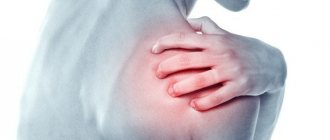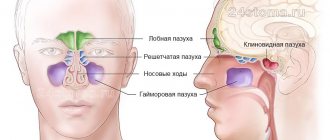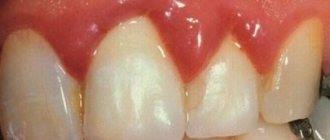- Acute maxillitis
Sinusitis (maxillary sinusitis, maxillitis) is inflammation of the mucous membrane of the maxillary (maxillary) sinuses. The sinuses are connected by common bony walls to the nasal cavity, mouth and orbit (eye socket) and are normally filled with air.
Sinusitis is an inflammation of the mucous membrane of the maxillary sinuses
The main functions of the maxillary sinuses, along with the frontal, sphenoid and ethmoid sinuses, are:
- formation of individual voice sound;
- warming and purifying inhaled air;
- equalization of pressure in the cavity formations of the skull in relation to external atmospheric pressure.
All sinuses communicate with each other through small holes, but if for some reason these holes are closed, their cleansing and ventilation stops. This promotes the accumulation of microbes and the development of inflammation.
The development of maxillitis is accompanied by an increase in body temperature, swelling of the cheek and eyelid on the affected side, intense pain in the bridge of the nose and at the wings of the nose, mucopurulent discharge from the nasal passages and difficulty in nasal breathing. With timely initiation of therapy prescribed by an otolaryngologist (ENT), serious complications can be avoided - osteomyelitis, orbital phlegmon, brain abscess, meningitis, otitis media, as well as kidney and myocardial damage.
Inflammation of the mucous membrane of the maxillary sinuses occurs in people of all ages, but in children under the age of 5 years, pathology develops extremely rarely, since their paranasal sinuses are underdeveloped.
Types of sinusitis
Sinusitis code according to ICD-10 (the international classification of diseases, 10th revision, developed by the World Health Organization):
- acute sinusitis : J01 (class - respiratory diseases, heading - acute respiratory infections of the upper respiratory tract);
- chronic sinusitis : J32 (class - respiratory diseases, heading - other diseases of the upper respiratory tract).
Maxillitis can be exudative or catarrhal. These forms of the disease are accompanied by a large amount of mucus or purulent discharge. Depending on the nature of the discharge, purulent, mucous and serous sinusitis are distinguished.
According to the prevalence of the process, maxillitis is unilateral, which, depending on the affected side, is divided into right-sided and left-sided, as well as bilateral.
Sinusitis can be unilateral or bilateral
Classification according to the course of the disease:
- acute : symptoms are similar to a runny nose, acute respiratory viral infection and other colds. Typically, the duration of inflammation varies from 14 to 21 days;
- chronic : can develop in the absence of adequate treatment for acute sinusitis. The duration of this form of the disease is usually 2 months or more. Symptoms may disappear almost completely, and then reappear with renewed vigor;
- recurrent : characterized by symptoms occurring two, three, or more times per year.
Classification by etiological factor:
- viral;
- traumatic;
- bacterial, divided into bacterial aerobic and bacterial anaerobic;
- fungal;
- endogenous, divided into vasomotor, otogenic, odontogenic;
- mixed;
- allergic;
- perforated;
- Iatrogenic.
Often chronic sinusitis is accompanied by a night cough that does not respond to conventional therapy. The reason for its appearance is pus flowing down the back wall of the pharynx from the maxillary sinus.
Classification according to the route of infection:
- hematogenous : the infectious agent enters through the blood. Most often, this form of sinusitis develops in children;
- rhinogenic : infection enters through the nasal cavity. Usually occurs in adults;
- odontogenic : microbes enter the maxillary sinus from the molars of the upper jaw;
- traumatic.
Chronic sinusitis, according to the nature of morphological changes, is divided into the following types:
- productive (parietal-hyperplastic, atrophic, necrotic, polypous, purulent-polypous, etc.). Against this background, changes in the mucous membrane of the maxillary sinus are observed (hyperplasia, atrophy, polyps and others);
- exudative (purulent and catarrhal), in which pus is formed.
In the chronic course of the disease, small pseudocysts and true cysts of the maxillary sinus often form due to blockage of the mucous glands. The most common forms of chronic inflammation are polyposis and polyposis-purulent. Catarrhal allergic and parietal hyperplastic forms occur in rare cases, and necrotic, oseotic, cholesteatoma and caseous forms occur in very rare cases.
Causes and risk factors for the development of inflammation
The causative agents of sinusitis can be viruses, chlamydia, fungi, staphylococci, streptococci, Haemophilus influenzae and mycoplasma. In adults, maxillitis is most often caused by viruses, pneumococci and Haemophilus influenzae, in children - by mycoplasma and chlamydia. In case of impaired immunity and in weakened patients, inflammation can occur due to saprophytic and fungal microflora.
Possible causative agents of the disease are staphylococci, streptococci, viruses, chlamydia, fungi, mycoplasma and hemophilus influenzae
Risk factors for the development of maxillitis are pathologies and conditions that complicate the ventilation of the maxillary sinus and contribute to the penetration of infection into its cavity. These include:
- congenital narrowness of the nasal passages;
- acute respiratory viral infection, acute and chronic rhinitis of any origin;
- chronic tonsillitis, pharyngitis;
- adenoids (in children);
- deviated nasal septum;
- surgical interventions performed on the alveolar process of the upper jaw or teeth;
- carious lesions of the upper molars.
The risk of developing the disease increases in the autumn-winter period, which is due to the natural seasonal decrease in immunity.
Symptoms
Symptoms of acute sinusitis
The inflammation begins acutely. The patient experiences an increase in body temperature to febrile (38–39 °C), severe signs of general intoxication and, possibly, chills. In some cases, body temperature may remain normal or subfebrile (37.1–38 °C). The patient's main complaints are pain in the affected maxillary sinus, forehead, root of the nose and zygomatic bone. On palpation, the pain intensifies; it can radiate to the corresponding half of the eyelid and temple. It is also possible to experience a diffuse headache of varying intensity.
On the side of inflammation, nasal breathing is impaired, and in cases of bilateral sinusitis, nasal congestion forces the patient to breathe through the mouth. Due to blockage of the tear duct, the development of lacrimation is sometimes observed. Nasal discharge from serous and liquid gradually becomes greenish, cloudy and viscous.
Symptoms of chronic sinusitis
Typically, chronic sinusitis develops as a result of an acute process. During the period of remission, the general condition, as a rule, does not worsen. During an exacerbation, symptoms of general intoxication occur in the form of headache, weakness and fatigue, and the body temperature can rise to febrile or subfebrile.
With exudative forms of maxillitis, the amount of discharge increases during the period of exacerbation, and when the patient’s condition improves, it decreases. Catarrhal sinusitis is characterized by a liquid and serous discharge, with an unpleasant odor; in the purulent form, it is a thick, yellowish-green, abundant, viscous mucus, which dries out and turns into crusts.
As a rule, headache develops only during the period of exacerbation of the chronic form of maxillitis or against the background of a violation of the outflow of discharge from the maxillary sinus. The patient may experience a pressing or bursting headache, which is localized behind the eyes and intensifies with pressure on the infraorbital areas and when the eyelids are lifted. When lying down or during sleep, the severity of the pain syndrome decreases, since in a horizontal position the outflow of pus resumes.
To avoid the development of side effects and to obtain a high concentration of the drug at the site of inflammation, topical antibiotics are used.
Often chronic sinusitis is accompanied by a night cough that does not respond to conventional therapy. The reason for its appearance is pus flowing down the back wall of the pharynx from the maxillary sinus.
With chronic maxillitis, skin lesions (weeping, maceration, swelling or cracks) in the vestibule of the nasal cavity are often detected. Many patients experience concomitant keratitis and conjunctivitis.
Acute sinusitis
MS has a negative impact on quality of life and professional activity. Treatment of MS is accompanied by significant financial costs. Currently, there remains a high level of morbidity due to intracranial and orbital complications developing against the background of MS. MS is an inflammatory disease of the SNP of a bacterial, viral, fungal or allergic nature, which is one of the most common pathologies of the ENT organs in all age groups and ranks 5th in the number of prescribed antibiotics. The term “acute sinusitis” (AS) is traditionally used to refer to bacterial infection of the SNP. Modern studies using computed tomography (CT) have shown that with ARVI, 9 out of 10 patients develop OS, which is of a viral nature, so sinus disease in most of them goes away without special antibacterial treatment. However, 1–2% of acute respiratory viral infections are complicated by bacterial OS. OS is a leading pathology in otorhinolaryngology both in the clinic and in the hospital. In recent decades, the incidence of OS in the world has increased 3 times, and the proportion of hospitalized patients increases annually by 1.5–2%. Over the past decade, there has been a significant increase in the incidence of MS in Russia from 4.6 to 12.7 per 1000 population. There continues to be an increase in the number of patients (61%) hospitalized for diseases of the nose and acute respiratory tract. The MS problem is relevant not only for Russia. The average incidence of MS in the countries of the European Union is 3.4 per 100 thousand population per year. When analyzing foreign data, the approach to the OS problem in the USA turned out to be interesting, especially due to the similarity of climatic conditions with Russia. It should be noted that in the United States, issues of the epidemiology of MS have been studied, such as the dependence of the disease on the gender of patients, their place of residence and social status. Statistically, in the United States, MS affects more women than men and people from higher social classes. Depending on the duration of the disease, the following are distinguished: – OS (less than 3 months); – recurrent sinusitis (2–4 episodes of OS per year); – chronic sinusitis (more than 3 months). Based on the severity of the course, the following forms of sinusitis are distinguished: – mild – nasal congestion, mucous or mucopurulent discharge from the nose and/or into the oropharynx, body temperature up to 37.5°C, headache, weakness, hyposmia; on an x-ray of the paranasal sinuses - the thickness of the mucous membrane is less than 6 mm; – moderate – nasal congestion, purulent discharge from the nose and/or into the oropharynx, body temperature above 37.5°C, pain and tenderness on palpation in the projection of the sinus, headache, hyposmia, pain may radiate to the teeth, ears, malaise; on the x-ray of the paranasal sinuses - thickening of the mucous membrane more than 6 mm, complete darkening or fluid level in 1 or 2 sinuses; – severe – nasal congestion, often profuse purulent discharge from the nose and/or into the oropharynx (may be completely absent), body temperature above 38°C, severe pain on palpation in the projection of the sinus, headache, anosmia, severe weakness; on the X-ray of the sinuses - complete darkening or fluid level in more than 2 sinuses; in the general blood test - increased leukocytosis, shift of the formula to the left, acceleration of ESR; orbital, intracranial complications or suspicion of them. It should be noted that in each specific case, the severity is assessed based on the totality of the most pronounced symptoms. For example, if orbital or intracranial complications are suspected, the course is always regarded as severe, regardless of the severity of other symptoms. The diagnosis of recurrent sinusitis in the US and Europe is made when a patient has 3 episodes of acute sinusitis over a year or more, separated by symptom-free intervals. Any of the SNPs may be involved in the inflammatory process, but most often in adults and children over 7 years of age, the maxillary sinus is affected, then the ethmoid sinus, the frontal sinus, and somewhat less commonly, the sphenoid sinus. The process can develop simultaneously in 2 or more sinuses on one or both sides: sinusitis, hemisinusitis, pansinusitis or polysinusitis. Acute MS usually has a viral or bacterial etiology, chronic MS usually has a bacterial etiology, and less often fungal. In recent years, the role of chlamydia in the etiology of MS has been discussed. The main pathogens of OS, according to Russian studies, are Streptococcus pneumoniae and Haemophilus influenzae, less often - Moraxella catarrhalis, Streptococcus pyogenes, Staphylococcus aureus, anaerobes. The most common pathogens in adults with OS are Streptococcus pneumoniae (20–43%), Haemophilus influenzae (22–35%), Moraxella catarrhalis (2–10%), Streptococcus pyogenes (3–9%), Staphylococcus aureus (0– 8%), anaerobes (0–9%), others – 4%. In chronic MS, anaerobes are of great importance, which are isolated in 48% of cases (Prevotella spp. - 31%, anaerobic streptococci - 22%, Fusobacterium spp. - 15%, etc.), aerobic pathogens are found in 52% of cases (Streptococcus - 21 %, H. influenzae – 16%, P. aeruginosa – 15%, S. aureus, M. catarrhalis – 10% each). In the USA, the most common causative agents of MS are also S. рneumoniae (from 20 to 43% of bacterial sinusitis) and H. influenzae (in 22–35% of cases). Less commonly, in 25% of cases, M. catarrhalis is detected. Recently, cases of MS, in which various genera of fungi are present, have become more frequent. This may be due to the fact that oral antibiotics are the first choice, which is administered empirically. Currently, the most popular theory is the rhinogenic cause of the development of MS. Under conditions of normally functioning mucociliary transport, bacteria do not have the opportunity for sufficiently long contact with the epithelial cells of the nasal cavity and SNP. Such conditions are created during a viral infection, when larger or smaller surfaces of the ciliated epithelium affected by the virus do not function. This prolongs the time of contact of pathogenic bacteria with cells and makes secondary bacterial infection possible. The first phase of OS is viral infection, and it “paves the way” for bacterial infection. In 90% of patients with ARVI, changes in the mucous membrane of the ED are detected in the form of edema, impaired microcirculation and stagnation of secretions. In cases of acute inflammation, the mucous membrane of the affected sinus, which is normally the thickness of tissue paper, thickens 20–100 times. In conditions of severe edema, blockade of the natural anastomosis, stagnation of secretions and a decrease in the partial pressure of oxygen in the SNP, a person develops MS. For the development of the inflammatory process in the ED, in addition to disruption of mucociliary transport, anomalies in the structure of the intranasal structures and ethmoidal labyrinth are important, disrupting the patency of the natural openings of the ED and the mechanisms of their aeration and cleansing. In conditions of stagnation of secretions and a decrease in the partial pressure of oxygen in the SNP, optimal conditions are created for the development of a bacterial infection. With a viral infection of the upper respiratory tract, the swollen mucous membrane of the nasal cavity closes the mouth of the nasal cavity, impairing its drainage. In this case, oxygen is absorbed from the sinus into the blood vessels of the mucous membrane. The negative pressure created promotes the release of transudate into the sinus, which serves as a breeding ground for bacteria that penetrate through the mouth of the sinus or through other routes. Due to the inflammatory process, positive pressure develops in the clogged sinus, accompanied by painful sensations. Thus, acute inflammation of the mucous membrane of the SNP develops as a complication of acute rhinitis caused by various infectious agents. In addition, it can occur with infectious diseases, allergic rhinitis, as well as with disruption of normal drainage of the nasal cavity due to hypertrophy of the nasal mucosa, polyposis or curvature of the nasal septum, dental diseases, due to trauma and intoxication with endo- or exotoxins. When the natural anastomosis of the SNP with the nasal cavity closes, negative pressure, hypersecretion and stagnation of the secretion of the mucous glands develop in the paranasal sinuses, the pH changes, and the function of the ciliated epithelium is disrupted. Inhibition or cessation of beating of cilia promotes the proliferation of the pathogen on the surface of the mucous membrane, its subsequent penetration through the membranes of the mucous membrane and the development of colonies. In acute inflammation, exudative processes predominate. Initially, in the early stages of inflammation, the exudate is serous, then mucous-serous, and with the addition of a bacterial infection it becomes purulent, containing a large number of leukocytes and detritus. At the same time, capillary permeability increases and swelling of the mucous membrane develops. The clinical picture of OS is determined by general and local signs of inflammation. Common symptoms include weakness, headache, general malaise, low-grade or febrile temperature, weakness and typical blood changes. In some cases, body temperature may remain normal. These symptoms are nonspecific, therefore, in the diagnosis of sinusitis, local manifestations of the disease are of paramount importance. There are the following criteria for diagnosing OS (in accordance with international recommendations): the patient has viral sinusitis if the symptoms of sinusitis last less than 10 days; A patient is diagnosed with bacterial OS if the symptoms of sinusitis become more severe after the 5th day of illness or the duration of sinusitis is more than 10 days (but less than 12 weeks). Patients with acute bacterial MS complain of difficulty in nasal breathing, nasal discharge, headache, pain in the face in the projection of the affected sinuses. Pathological discharge of SNP can also flow into the pharynx along the posterior surface of the soft palate or the posterior wall of the nasopharynx, causing the development of a syndrome called “post-nasaldrip” in the English literature. On palpation and percussion, there is increased sensitivity or pain in the area of the anterior and lower walls of the frontal sinus with frontal sinusitis, and the anterior wall of the maxillary sinus with sinusitis. An important method for objective diagnosis of OS is anterior rhinoscopy. Rhinoscopy reveals hyperemia and swelling of the nasal mucosa on the affected side. There is also a narrowing of the lumen of the nasal passages, difficulty in nasal breathing, and a violation of the sense of smell. In the middle or upper, as well as the common or lower nasal passages, purulent secretion is usually detected. When the posterior group of the SNP (sphenoid sinus, posterior cells of the ethmoid labyrinth) is affected, purulent exudate often flows down the posterior wall of the pharynx. Radiography of the SNP in the nasomental projection is still widely used in Russia. A characteristic radiological sign of OS is a decrease in pneumatization of the sinus; sometimes a horizontal level of fluid in the sinus can be seen on the radiograph (if the filming was performed in a sitting position). The most common is research in direct (nasofrontal, nasomental) projections. In terms of information content, it is significantly inferior to CT, which is today the “gold standard” in the diagnosis of sinusitis; in many countries, radiography is excluded from the diagnostic algorithm. The disadvantage of radiography is that, although it allows one to detect the level of fluid or swelling of the mucous membrane in the maxillary and frontal sinuses, it provides practically no information about the condition of the ethmoid bone sinuses. The introduction of CT into practice has significantly improved the quality of diagnosis of diseases of the nose and acute respiratory tract. The main advantages of CT are that it provides a spatial display of the relationships between intranasal structures and the SNP, allows one to judge the nature of anatomical disorders and their impact on the development of the pathological process, and evaluate the characteristics of tissues by their X-ray density. CT should be performed in the sagittal direction. Axial CT does not provide the necessary anatomical assessment; It is mainly used to diagnose lesions of the sphenoid and frontal sinuses. Magnetic resonance imaging (MRI) is of less importance for diagnosing OS, which is due to the high frequency of overdiagnosis of SNP pathology. Other instrumental methods for diagnosing sinusitis, such as ultrasound and diaphanoscopy, are rarely used. A mandatory method for diagnosing bacterial OS is microbiological testing. Material for research is obtained from the nasal cavity or from the affected sinus during puncture. Diagnostic and therapeutic puncture of the maxillary sinus is most often carried out through the lower nasal passage; access to the sinus cavity is also possible through the middle nasal passage. Trepanopuncture of the frontal sinus is performed through the anterior (according to M.E. Antonyuk) or orbital walls. Pathological discharge taken from the sinuses and nose during puncture is sent for examination of the microflora and its sensitivity to antibiotics. Cultivation of samples obtained by puncture of SNP is accepted as a reliable method for determining the causative agent of bacterial OS. Reliable microbiological examination can be carried out if the material is obtained directly from the sinus anastomosis during endoscopy, but in practice this method is rarely used. Delays in delivery and improper storage of material can also affect the reliability of microbiological research. Analyzing the data of modern scientific literature on the diagnosis of sinusitis, it should be noted that at present there is no single reliable method that would fully characterize the state of the sinusitis, therefore the scheme for examining patients with OS should include the mandatory conduct of several complementary studies, on the basis of which the results will be based making a clinical diagnosis. The intensive development of non-invasive research methods based on computer technologies has predetermined a completely new, qualitative leap in the diagnosis of diseases of the urinary tract. Among these methods are acoustic rhinometry and anterior active rhinomanometry, which allow one to study the geometry of the nasal cavity and nasal resistance, and therefore reliably judge the functionality of the nose. These methods are indispensable for objectifying the subjective sensations of both the patient and the doctor, especially in assessing the results of surgical interventions on the SNP and intranasal structures, as well as conservative treatment of rhinosinusitis. Treatment The goals of treatment with antibiotics for OS are: a) normalization of the condition of the SNP; b) prevention of serious complications such as meningitis and abscess; c) stopping the development of the disease; d) eradication of microflora. The main objectives of the drug therapy are to remove the pathogen and restore the biocenosis of the SNP. Treatment for MS should be comprehensive, addressing all its manifestations. The most effective is etiotropic therapy. The modern approach to the treatment of OS includes 2 main principles: 1st - the so-called unloading therapy, i.e. restoration of sinus drainage function; 2nd – removal of the pathogen. Restoring the drainage function makes it possible to fully cope with viral OS, while with diagnosed bacterial OS it is necessary to prescribe antibacterial drugs. The main treatment method for acute bacterial MS remains antibiotic therapy, which is usually empirical, based on knowledge of the typical pathogens of the disease and their predicted sensitivity to antibiotics. Not all MS can be treated with antibiotics, but only its moderate and severe forms. Since additional research methods (radiography, CT, ultrasound and diaphanoscopy) do not make it possible to differentiate viral and bacterial damage to the SNP and are not indicators of the severity of the disease, the main criteria when deciding whether to prescribe an antibiotic are the patient’s general condition and complaints, medical history and the presence of purulent discharge in the nasal passages. The optimal choice would be an antibiotic aimed at a specific pathogen. Unfortunately, bacteriological examination does not guarantee the correct choice of antibiotic, because bacteria found in nasal swabs and SNP are not always the actual causative agent of MS. This is due, firstly, to the high probability of “traveling” microflora of the nasal vestibule getting into the material being studied when the material is collected. In addition, the clinical picture of moderate and severe forms of acute bacterial MS dictates the need for systemic administration of antibiotics, without waiting for the results of a microbiological study, which takes several days. The result of bacterioscopy can be obtained in a shorter time, and to some extent it helps to guess the type of pathogen. When choosing an antibacterial drug, the sensitivity of typical pathogens to it is of paramount importance. Taking into account these American clinical recommendations on antimicrobial therapy in acute bacterial RS preparations of the 1st choice are amoxicillin or amoxicillin/clavulanate and cephalosporins of the II and III generations (for example, ceftibuten and cepha-bore). The bacteriological efficiency of amoxicillin and amoxicillin/ clavulanate is 88.8 and 93.5%, respectively, cephalosporins - 85–87%. These drugs are designed for oral administration, and it is with them that the treatment of acute bacterial RS begins on an outpatient basis. The effectiveness of treatment should be evaluated after 3 days. The criterion for the effectiveness of antibiotic therapy is primarily the dynamics of the main symptoms of RS (headaches, nasal congestion) and the general condition of the patient. The presence of a huge arsenal of modern antibiotics, of course, expands the capabilities of the clinician. The successful implementation of these tasks is facilitated by knowledge of such characteristics of drugs as their spectrum of action, pharmacokinetics, microbiological effects, as well as proven effectiveness and safety. Most errors in prescribing an antibiotic in outpatient practice are associated with the wrong choice of the drug. The main criterion is still the possibility of influencing the main pathogens of inflammation. The priority when choosing a particular drug is the optimal spectrum of antibacterial activity, i.e. Covering the most significant, according to statistical data, at present and most likely for this patient pathogens. Another problem when prescribing antibiotics is the lack of accounting for the level of acquired resistance of pathogens in the population. The uncontrolled and often unreasonable use of a number of antibacterial agents led to an increase in regional resistance. There is a tendency to reduce the sensitivity of the “main” pathogen of acute sinusitis Streptococcus pneumoniae to β-lactams. Penicillin resistance does not exceed 2%, but strains with moderate sensitivity are 10–20%. β-lactams retain complete clinical efficiency in relation to penicillin-re-resisted pneumococci, but a decrease in the effectiveness of I-II generation cephalosporins is determined. The low natural activity of the oral representative of cephalosporins of the III generation - ceftibuten was revealed. There is an increase in macrolide resistance: in Europe - from 8 to 35%, in Russia - about 12%. The resistance in Russia is extremely high to Co-trimoxazole and tetracycls-more than 50%. The given data can avoid errors when choosing a specific drug - for example, the appointment of primary healthcares of sulfonamides, lincomicin, doxycycline, cyprofloxacin and other antibacterial agents. In recent years, a decrease in the irrational administration of antibiotics in a number of countries of the European community has been slightly improved in relation to Streptococcus Pneumoniae resistance, which manifested itself in a decrease from 20 to 13% of penicillin -resisty strains of this microorganism. The problem of resistance to Haemophilus influenzae is as follows: β-lactamaz products in the world are from 1 to 40%, in Russia-does not exceed 10%. There was practically no resistance to amino -proof penicillins, cephalosporins of the I - IV generations, fluoroquinolones, although amoxicillin is not inferior to these groups of drugs in clinical efficiency. Attention should be paid to the low activity of the I generation cephalosporins in relation to this pathogen. In most cases, especially in outpatient practice, identification of the pathogen is either not carried out or significantly deeds in time, which creates problems in the correct choice of the antibacterial agent. If treatment does not give the desired effect, then it is necessary to change the antibiotic. The spectrum of significant pathogens and the nature of resistance in relation to antibacterial drugs are currently such that β -lactam, fluoroquinolones are used for the treatment of purulent sinusitis at the present stage. Lefoccines and macrolides. Given the typical pathogens and Russian data on antibiotic resistance to antibiotics in the OS are considered amoxicillin - a semi -synthetic antibacterial drug from the aminopenicillin group. The recommended dose for children is 40–45 mg/kg/day, for adults - 1.5–2 g/day, divided into 2-3 doses. In case of suspicion of the presence of penicillin -reized pneumococci, the dose can be increased to 80–90 mg/kg/day. For children and up to 3-3.5 g/day. for adults. In the case of insufficient clinical effect, after 3 days, amoxicillin should be replaced with an antibiotic active against β-lactamazoprodiating strains of a hemophilic stick and Moraksella-amoxicillin + clavulanic acid. With recurrent OS, it is better to immediately start treatment with an amoxicillin + clavulanic acid. Its dose should be 40–45 mg/kg/day. For children, 1.5–2 g/day. for adults (in terms of amoxicillin). You can also prescribe cephalosporins of the II generation (cofuroxim inside). If the intramuscular path of administration is preferred, ceftriaxone is used (1 p./Day for 3 days). Among the oral preparations of the cephalosporinal series, ceftibuten is the most effective. It is attributed to modern cephalosporins of the III generation. The drug is used at 400 mg 1 p./Day. within 10 days. As an alternative to drugs of the 1st choice, mainly with allergies to β-lactam antibiotics, treatment can be started with macrolides. With OS, the use of clarithromycin, azithromycin and roxythemycin is justified. In adult patients, in case of ineffectiveness of these modes of therapy or allergies, fluoroquinolones of the III - IV generation are used - effective against S. Pneumoniae and N. Influenzae. In particular, levofloxacin (lefocyne) is included in such drugs of the new generation. The spectrum of the antimicrobial effect of this group of drugs is as adapted to the pathogens of acute bacterial RS, and their calculated bacteriological effectiveness is approached 100%. When developing a new generation of fluoroquinolons, a lack of I generation preparations (in particular, ciprofloxacin) was eliminated - low efficiency against S. pneumoniae. Lefoccine has high activity against the main pathogens of the OS, including strains resistant to other classes of antibiotics (for example, penicillin-resisted pneumococcus strains). Lefoccine is characterized by optimal pharmacokinetics, rapid accumulation in the ONP mucosa in concentrations exceeding the minimum overwhelming for potential pathogens. According to studies, in OS in adults, levofloxacin is not inferior in clinical and bacteriological efficiency of amoxicillin + clavulanic acid and clarithromycin. Lefoccine take 1 p./Day. 500 mg for 10 days. It can be used in patients with allergies to β-lactam antibiotics. In severe sinusitis and the threat of complications, it is possible to use stepped down therapy: levofloxacin is first administered parenterally, then inside. With the average course, amoxicillin, amoxicillin + clavulanic acid, levofloxacin are considered the drugs of choice. The main side effect of fluoroquinolons is their negative effect on the growing connective and cartilage tissue, so these drugs are contraindicated in children and adolescents. In this regard, macroline antibiotics (clarithromycin, azithromycin, roxytromycin, midkamymitsin), the calculated bacteriological efficiency of which are approximately 80%are considered to be about 80%. With the average course of the disease, the drugs of the choice are oral β-lactam antibiotics from the group of penicillins and cephalosporins of the II-III generations, fluoroquinolones: amoxicillin/clavulanate, cofuroxim-cefacaclor, levofloxacin (lefocycin), sparfloxacin. In severe sinusitis and the threat of complications, the drugs are prescribed parenterally (intramuscularly or intravenously). It is recommended to use inhibitor -charged penicillins, cephalosporins of the III - IV generations (cephotaxim or ceftriaxone; cephepim or coffpyr), fluoroquinolones (levofloxacin, ciprofloxacin, sparfloxacin) or carbapenema (imipenet). Thus, with the middle-resistant and severe course of the OS in adults, in the case of the patient intolerance of β-lactam antibacterial agents, the drug of choice is levofloxacin (lefocyne). The causes of the inefficiency of antibiotic therapy are: • the wrong choice of the drug (excluding the main pathogens, the spectrum of antibiotic activity); • the wrong path of administration of the drug (you should not in an outpatient basis to administer antibiotics intramuscularly, the basis of therapy in the clinic should be an oral administration); • improper dose choice (often lower than necessary) and dosing regime (non -compliance with the multiplicity of administration, does not take into account the connection with eating); • poor compliance; • Low concentration of the drug in the focus of inflammation. Indications for hospitalization: • severe clinical course of OS, suspicion of complications; • OS against the background of severe concomitant pathology or immunodeficiency; • the impossibility of conducting special invasive manipulations in outpatient conditions; • Social indications. With the ineffectiveness of conservative treatment, orbital and intracranial complications (orbit phlegmon, rhinogenic meningitis, brain abscess, sepsis), the patient is surgical in the conditions of the ENT stations. It is known that the presence of polypous, polypose-native, cystic and often recurrent chronic purulent sinusitis is usually an indication for surgical treatment. The problem is that for this kind of treatment there are always indications, although in reality many patients are sufficiently long -term drug therapy. The recurrent OS may be the result of improper therapy of the OS, which contributed to a violation of mucociliary transport, as well as the pathology of intra -reference structures, can be caused by phenomenonal causes. The prevention of relapses of the OSS involves the following requirements: 1. Elimination of a variety of anatomical defects in the nasal cavity that prevents normal nasal breathing, leading to a violation of mucociliary transport and drainage of the paranasal sinuses through natural fears. 2. Timely reorganization of the oral cavity in order to prevent the development of periodontitis in the roots of teeth, adjacent to the bottom of the maxillary sinus. 3. Systematic measures to increase the natural local and general resistance of the body.
Literature 1. Kryukov A.I., Sedinkin A.A. Treatment and diagnostic tactics for acute bacterial sinusitis // Ros. otorhinol. 2005. No. 4. P. 15-17. 2. Lopatin A.S. Principles of treatment of acute and chronic sinusitis. Pharmacotherapy of ear, nose and throat diseases from the perspective of evidence-based medicine. Lecture educational course. M., 2006. pp. 15–23. 3. Guide to rhinology / ed. G.Z. Piskunova, S.Z. Piskunova. M.: Litterra, 2011. 960 p. 4. Yakovlev V.P., Yakovlev S.V. Rational antimicrobial pharmacotherapy. Guide for practicing physicians. T. 2. M., 2003. 1001 p. 5. Probst R., Grevers G., Iro H. Hals–Nasen–Ohren Heilkunde. Stuttgart – New York, 2008. 415 rub.
Diagnostics
To diagnose sinusitis, it is necessary to collect the patient’s complaints, externally examine him, including determining the reflex dilatation of the skin vessels in the infraorbital region, and examine the mucous membrane of the nasal cavity in order to identify swelling, inflammation and purulent discharge from the sinus opening.
X-rays may be prescribed to diagnose the disease.
An x-ray reveals darkening of the maxillary sinus. If the information content of these research methods to determine whether the patient is contagious or not is not enough, a puncture of the maxillary sinus is performed.
Consequences
Sinusitis is terrible “in anger”, its minimal complication is otitis media. But this is only one of the possible options. There is a whole range of complications:
- purulent, serous meningitis;
- brain abscess;
- damage to the membrane and its swelling;
- reactive edema of the brain or retina.
After some sinusitis, people go blind, deaf forever. Therefore, when treating a disease, it is better to raise the alarm in vain than to leave it to chance. And also do not forget about the prevention of sinusitis during a runny nose.
Conservative treatment of sinusitis
Acute maxillitis
In order to reduce swelling of the mucous membrane of the maxillary sinuses and to restore normal ventilation, local vasoconstrictors (for example, xylometazoline hydrochloride, naphazoline) are used for a course of up to 5 days.
If the patient has significant hyperthermia, antipyretics are prescribed; in cases of severe intoxication, drugs with antibacterial action are prescribed.
To avoid the development of side effects and to obtain a high concentration of the drug at the site of inflammation, topical antibiotics are used.
After normalizing body temperature, physical therapy is recommended, for example, UHF therapy (ultra high frequency), Sollux infrared lamp.
Chronic maxillitis
In the chronic course of the disease, a sustainable therapeutic effect can be achieved only by eliminating the cause that caused inflammation in the maxillary sinus (sore teeth, deviated nasal septum, chronic pathologies of the ENT organs, adenoids, and others). In case of exacerbation of the disease, in order to avoid atrophy of the mucous membrane of the maxillary sinuses, local vasoconstrictor drugs are used in short courses.
Patients are prescribed drainage of the maxillary sinus. Sinus lavage is carried out using sinus evacuation or cuckoo (vacuum transfer method). For procedures, disinfectant solutions are used (for example, Potassium permanganate, Furacilin). Solutions of antibacterial agents and proteolytic enzymes are injected into the cavity. Of the physiotherapeutic procedures, ultraphonophoresis with hydrocortisone, diathermy, inhalations, and UHF therapy are most often prescribed. Speleotherapy is also effective.
Patients with necrotic, cholesteatoma, caseous, polypous and purulent-polypous forms of chronic maxillitis are advised to undergo surgery - maxillary sinusotomy.
Treatment of acute maxillary sinusitis (sinusitis)
The emphasis in treating the disease is to relieve swelling in the nasal cavity, free the sinus from pus and mucous discharge, as well as eliminate the pathogenic microflora that caused the inflammation. The main task is to prevent the development of purulent sinusitis and take all necessary measures at the first signs of the appearance of pus in the sinuses.
To solve this problem, medications of the following groups are prescribed:
- antibiotics (augmentin, zinnat, azithromycin, polydexa, bioparox, isofra) - drugs with local and systemic action are used;
- antiseptics (furacilin, collargol, protargol);
- antihistamines (Telfast, Suprastin, Erius, Tavegil, Claritin);
- vasoconstrictors (rinazolin, farmazolin, tizin, xymelin, naphthyzin) - do not use them for a long time;
- moisturizing nasal preparations (Saline, Rinolux, Quix, Humer, Delofen);
- anti-inflammatory drugs (iburprofen, aspirin, paracetamol);
- corticosteroids (nasonex, beconase, Avamys, prednisolone) - in drops and tablets;
- probiotics (Linex, bifiform, probifor, bifiliz, biosporin) - “cover” the body from the harmful effects of antibacterial agents.
Treatment of sinusitis at home
Traditional medicine can be used as an auxiliary therapy for maxillary sinusitis at home.
Decoctions and infusions of medicinal herbs are often used at home as an auxiliary therapy.
An herbal infusion can be used orally. To prepare it, add 2 tbsp to an enamel or glass container with a lid. spoons of St. John's wort, eucalyptus, lavender, chamomile and sage, 1 tbsp. spoon of yarrow and string, mix thoroughly. From the resulting mixture take 3 tbsp. spoons, pour 2 liters of boiling water over them, close the container with a lid and leave for half an hour at room temperature, then filter. The finished infusion is taken orally, 100 g every 3 hours.
Also, in the treatment of the chronic form of the disease, horseradish root is often used in the form of grated gruel in combination with lemon juice (1/3 cup of gruel and the juice of three lemons). The prepared mixture is taken orally every morning, 1/2 teaspoon, 20 minutes before meals. Treatment is carried out in courses, repeating them in the fall and spring until complete recovery.
If the patient has significant hyperthermia, antipyretics are prescribed; in cases of severe intoxication, drugs with antibacterial action are prescribed.
When therapy at home, topical agents are often used (the sinuses are washed with a solution of table salt or sodium chloride before the procedure):
- clay compresses : 50 g of clay is diluted in hot water to the consistency of plasticine. Moisten gauze in warm vegetable oil and place it on both sides of the nose (on the area of the maxillary sinuses). Place warm clay cakes on top of the gauze and keep them for 1 hour;
- honey ointment : 1 tbsp. grate a spoonful of fragrance-free baby soap. Mix 1 tbsp. spoon of honey, milk and vegetable oil and add them to the grated soap. The resulting mixture is heated in a water bath until the soap melts. Add 1 tbsp to the resulting product. a spoonful of alcohol, pour the whole mixture into a glass jar and let it cool. Using a cotton swab, the ointment is introduced into the nasal passages and left for 15 minutes. The duration of treatment is 21 days. The ointment should be stored in a closed container in the refrigerator;
- inhalation with sea buckthorn oil : 10 drops of sea buckthorn oil are added to a pan of boiling water. The released steam is inhaled for approximately 15 minutes;
- Shilajit drops : 10 crushed Shilajit tablets (0.2 g each) are thoroughly mixed with 1 teaspoon of glycerin and 4 teaspoons of water. The resulting product is instilled into the nose 3 times a day. The duration of therapy is 21 days. The course of treatment with breaks of 5 days is repeated several times until complete recovery.
Traditional medicine is recommended to be used with caution, especially if the components they contain can cause allergic reactions. If there is no therapeutic effect within several days, or the patient’s condition worsens, you should consult an otolaryngologist for advice.











